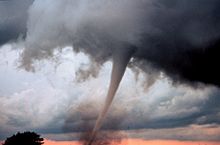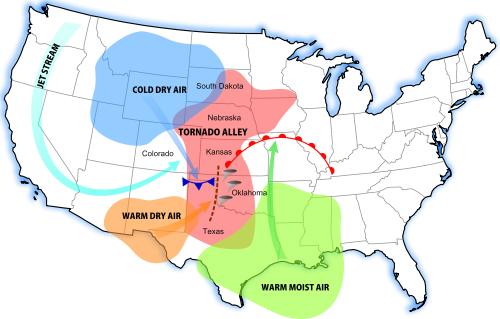| Tornadoes are one of the most violent and powerful types of weather. They consist of a very fast rotating column of air that usually forms a funnel shape. They can be very dangerous as their high speed winds can break apart buildings, knock down trees, and even toss cars into the air. |
 |
 |
|
| Category | Wind Speed | Strength |
| EF-0 | 65-85 MPH | Weak |
| EF-1 | 86-110 MPH | Weak |
| EF-2 | 111-135 MPH | Strong |
| EF-3 | 136-165 MPH | Strong |
| EF-4 | 166-200 MPH | Violent |
| EF-5 | over 200 MPH | Violent |
